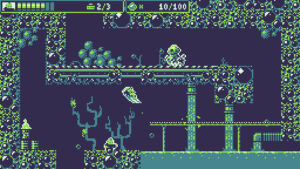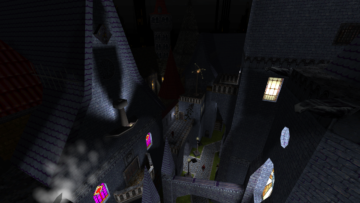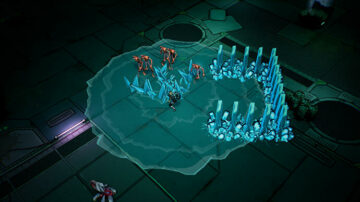If you’ve visited Steam in the last decade, you’re likely already acquainted with visual novels. Though games like Famicom Detective’s Club saw the inception of the visual novel in the 1980s, they’ve reached a particular zenith on Steam, thanks mostly to a plethora of very horny games.
But hidden among the shovelware is a wealth of original and interesting pieces of interactive fiction that demonstrate the continuing potential of the medium. Hatoful Boyfriend and Doki Doki Literature Club stand out as visual novels that gained a mainstream appeal while remaining part of that niche market. And it can be argued they were early contributors to the golden age of visual novels in which we now find ourselves, as more and more start to find their way into the mainstream.
In the past few months alone, we’ve seen the release of Coffee Talk Episode 2: Hibiscus and Butterfly, Sega’s The Murder of Sonic the Hedgehog, Square Enix’s Paranormasight, and most recently Varney Lake. It raises the question, after forty years of visual novels, why now? What’s making visual novels so popular with developers and players alike?
It’s a question for which even those that make them don’t have a simple answer.
“What I can tell you is that visual novels don’t require a huge budget to make but it forces its developers to focus more on character-driven stories,” says Kris Antoni Hadiputra, CEO of Toge Productions. “It’s the perfect genre for small gamedev teams with limited technical skill/know-how but are strong in writing and telling stories.”
So, they are less labour-intensive, which explains why there are so many in the marketplace, but why are they achieving mainstream attention?
Toge’s journey into visual novels started in 2020 with the release of Coffee Talk. Created by the late Mohammad Fahmi, it was a release with an exquisite sense of timing. A coffee shop social simulator that dropped at a time when global lockdowns left us dreaming of cafes, it might be hyperbole to suggest the game single handedly drove this surge of visual novels, but looking back, 2020 was certainly an inflection point for the medium.
“Coffee Talk was the result of our internal gamejam where we allow our team to explore and experiment new ideas,” Hadiputra tells me. “We never made a narrative game before Coffee Talk and at the time Mohammad Fahmi wanted to explore a game that can emulate the feeling of ‘watching the rain while holding a warm drink and listening to your friends gossiping in a café.'”
Three years on, Toge – as both developer and publisher – has several visual novels under its purview. Including Coffee Talk’s recent sequel.
In an industry increasingly keen to emulate filmic narrative structures, with great cost and without much success, Hadiputra says visual novels help create immersive stories “while keeping the scope of the game’s development relatively manageable.”
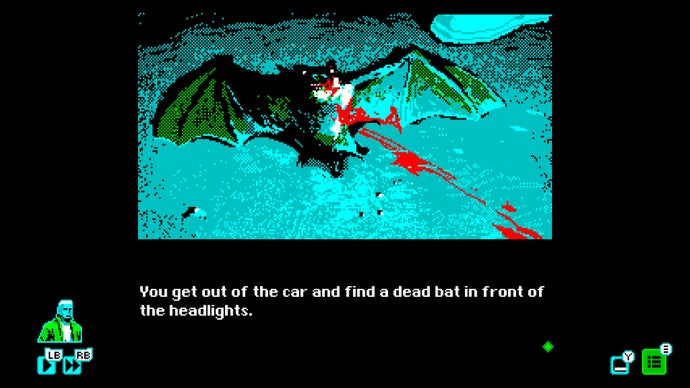
Stories are thus pushed to the forefront, rather than being retrofitted into a gameplay loop or lost in the gamification of narrative points. It’s all driven not by a desire to push video games closer to the film industry, but rather, according to Nico Saraintaris of LCB Game Studio, “passion for storytelling and our love of designing mechanics that generate new and interesting gameplay systems.”
From a player’s perspective, visual novels offer an undemanding interactive experience. When even video games feel too intense, too input-heavy, interactive fiction provides a way to engage our imaginations without taxing ourselves physically and cognitively.
“With their static images, transitions, and scene jumps, visual novels seem to create something similar to what a comic does,” Saraintaris says. “There is no urgency in a visual novel. Like a book, each player can take as much time as they want to enjoy it.”
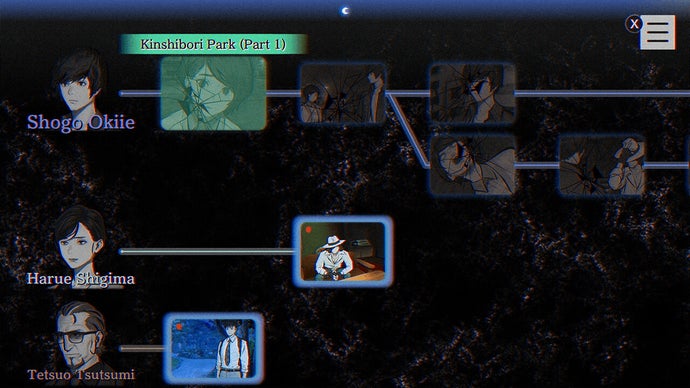
Despite the linear confines that set narratives ostensibly provide, it’s a medium offering players a remarkable amount of control over our experience. Whether we want to fill in the gaps with our own imagination is entirely up to us. With their clearly defined boundaries between chapters, visual novels also offer control over when we start and stop without feeling like we’re cutting the narrative short. This is a way to play that other games try and fail to achieve.
For all this though, it’s perhaps incorrect to call visual novels a genre unto themselves. Rather, they’re ways to better express existing genres in the form of pure narrative. As a result of this, their potential appears endless as they branch into mainstream development. This recent surge in popularity, Hadiputra believes, will only see visual novels grow as their elements “get mixed with other genres and mechanics to deliver new narrative experiences.”
We needn’t look far for examples. The Persona series has employed visual novel elements for years alongside its role-playing gameplay. Elsewhere, games like 2022’s Pentiment demonstrate how to create narrative-focussed games that play like visual novels, but include more input from the player.
Visual novels instead become a spectrum, ranging from interactive comic books to rich stories in the midst of complex gameplay loops.
“Interactive fiction is pure potential,” Saraintaris says, “capable of incorporating elements of resource management, strategy, board gaming, RPG, roguelikes, etc. I believe that these elements (cleverly used within the context of each game’s fictional universe) open up possibilities for a future – or rather, a present – full of exploration.”
In essence, visual novels represent everything the gaming industry is striving for. Here are games that engage interactively, while also offering robust narratives that aren’t unbalanced by gameplay. There may come a point where, as gaming narratives advance and we get better at incorporating them into gameplay, any game could be called a visual novel or piece of interactive fiction.
But that development starts here, with games that let us wrest control over our gaming experiences like Coffee Talk 2 and Varney Lake. Games that set us on a path, but set us free to engage with them as we like.
When you pick up a visual novel, “you are aware that you will be reading extensively,” Saraintaris says, but you also “have control over your time, and can submerge yourself in a new world.”
Submerge is a good word, because visual novels are a trap like quicksand. But a pleasant trap into which one willingly walks. In an industry that often feels intense, the appeal of visual novels is that they offer a balm – for both players and developers. They’re a way to build our own stories in the peripheries of seemingly fixed narratives. They’re a pure distillation of what video game narratives can be and what so many strive, and fail, to become.
- SEO Powered Content & PR Distribution. Get Amplified Today.
- PlatoData.Network Vertical Generative Ai. Empower Yourself. Access Here.
- PlatoAiStream. Web3 Intelligence. Knowledge Amplified. Access Here.
- PlatoESG. Automotive / EVs, Carbon, CleanTech, Energy, Environment, Solar, Waste Management. Access Here.
- PlatoHealth. Biotech and Clinical Trials Intelligence. Access Here.
- ChartPrime. Elevate your Trading Game with ChartPrime. Access Here.
- BlockOffsets. Modernizing Environmental Offset Ownership. Access Here.
- Source: https://www.eurogamer.net/why-are-visual-novels-suddenly-so-popular
- 1980s
- 2020
- 2022
- a
- according
- achieve
- achieving
- acquainted
- advance
- after
- age
- alike
- All
- allow
- alone
- alongside
- already
- also
- among
- amount
- an
- and
- answer
- any
- appeal
- ARE
- argued
- as
- At
- attention
- aware
- back
- BAT
- BE
- because
- become
- before
- being
- believe
- believes
- BEST
- Best Games
- Better
- between
- blood
- board
- book
- Books
- both
- boundaries
- budget
- build
- but
- by
- cafes
- call
- called
- CAN
- capable
- car
- ceo
- certainly
- clearly
- closer
- club
- Coffee
- come
- Comic Books
- complex
- content
- context
- continuing
- Contributors
- Control
- cookie
- cookies
- cost
- could
- create
- created
- credit
- cutting
- decade
- defined
- deliver
- demonstrate
- designing
- desire
- despite
- Developer
- developers
- Development
- displayed
- distillation
- does
- don
- Drink
- driven
- dropped
- each
- Early
- elements
- employed
- enable
- Endless
- engage
- enjoy
- entirely
- episode
- essence
- etc
- Eurogamer
- even
- everything
- Examples
- existing
- experience
- Experiences
- experiment
- explaining
- explains
- exploration
- explore
- express
- exquisite
- extensively
- Fail
- far
- feel
- few
- Fiction
- Film
- Film industry
- find
- fixed
- Focus
- For
- forces
- forefront
- form
- Free
- Friends
- from
- full
- future
- gained
- game
- gameplay
- Games
- Games Like
- gamification
- Gaming
- Gaming Industry
- gaps
- GDPR
- generate
- Genre
- genres
- Get
- Global
- golden
- good
- great
- Grow
- has
- Have
- help
- here
- hidden
- holding
- How
- How To
- HTTPS
- huge
- i
- ideas
- if
- Images
- imagination
- imaginations
- immersive
- in
- inception
- include
- Including
- incorporating
- increasingly
- industry
- Inflection
- instead
- interactive
- interesting
- internal
- into
- Is
- IT
- ITS
- journey
- jpg
- keen
- keeping
- last
- late
- left
- less
- like
- likely
- Limited
- Listening
- literature
- Little
- lockdowns
- Look
- looking
- looking back
- lost
- love
- made
- Mainstream
- make
- Making
- manage
- manageable
- management
- many
- Market
- marketplace
- May
- me
- Mechanics
- medium
- Message
- might
- mixed
- months
- more
- most
- mostly
- Mothmen 1966
- much
- murder
- narrative
- narratives
- never
- New
- new world
- Niche
- no
- not
- novel
- now
- of
- offer
- offering
- often
- on
- One
- only
- open
- or
- original
- Other
- our
- ourselves
- out
- over
- own
- part
- particular
- passion
- Past
- path
- Pentiment
- perfect
- perhaps
- persona
- perspective
- pick
- piece
- pieces
- plato
- plato data intelligence
- platodata
- platogaming
- play
- player
- players
- please
- plethora
- Point
- Points
- Popular
- popularity
- possibilities
- potential
- present
- Provide
- provides
- Publisher
- push
- pushed
- question
- raises
- rather
- RE
- Reading
- recent
- recently
- red
- relatively
- release
- remaining
- remarkable
- represent
- require
- resource
- result
- rich
- robust
- Role-Playing
- RPG
- s
- saw
- says
- scene
- scope
- see
- seem
- seemingly
- seen
- Sega
- sense
- sequel
- Series
- set
- settings
- several
- Shop
- Short
- similar
- Simple
- simulator
- single
- small
- So
- Social
- something
- Sonic
- Spectrum
- square
- Square Enix
- stand
- start
- started
- Steam
- stop
- Stories
- Story
- storytelling
- Strategy
- strive
- strong
- style
- success
- suggest
- surge
- Systems
- Take
- talk
- targeting
- Team
- teams
- Technical
- television
- tell
- tells
- text
- than
- thanks
- that
- The
- The Game
- their
- Them
- themselves
- there
- These
- they
- this
- those
- though
- three
- Thus
- time
- timeline
- timing
- to
- too
- trailer
- transitions
- true
- try
- under
- universe
- up
- us
- used
- ve
- Video
- video games
- visited
- Visual Novel
- want
- wanted
- was
- watching
- way
- ways
- we
- Wealth
- were
- What
- when
- where
- whether
- while
- why
- will
- window
- with
- within
- without
- world
- writing
- years
- you
- your
- yourself
- youtube
- zephyrnet

